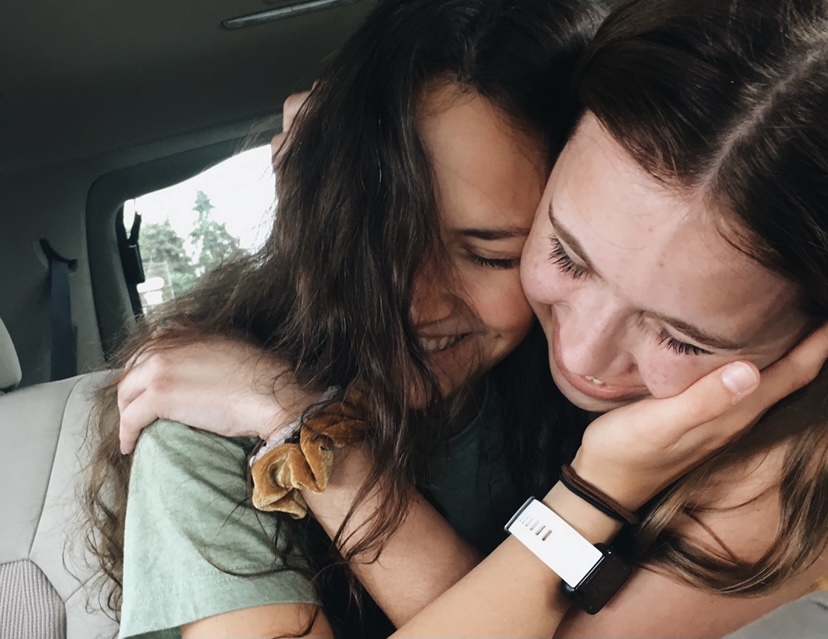Exploring Our Ability to Experience and Express Love
Two friends share an embrace after spending time apart.
Some define love as an action; a deliberate choice, while others perceive it as vehement affection towards the object of endearment. Truth be told, these two definitions work intrinsically to show those around us that we care as our affection drives us to action. The ways in which we express and experience love can be best understood through our own love language.
The concept of love languages was first developed by author Gary Chapman. He concluded that the best way to show someone you love them is to demonstrate that affection in the way they give love themselves. The five different modes of love language consist of physical touch, words of affirmation, quality time, acts of service, and receiving gifts.
In a RHS survey, students were asked to recall an instance where they felt loved. One anonymous source stated, “When people remember the little things about me that I tell them it is like they actually listened to me and care about what I have to say.”
This individual likely resonates with the love language word of affirmation. They feel seen and appreciated by the people in their life recalling certain qualities or attributes known about them. Words of affirmation also entails any positive speech that uplifts, confirms or empathizes with the person. Another prevalent love language among students was physical touch.
Many survey respondents acknowledged how a simple hug or arm around the shoulder allowed them to relax and let their walls down. Not only that, but it was also a means of comforting others around them.
Psychology Today published an article on what it really means to be in love. Ph.D Lisa Firestone stated, “Love includes feeling for the other that goes beyond any selfishness or self-interest on the part of the loved one. As such, love nurtures and has a positive effect on each person’s self-esteem and sense of well-being. Love never involves deception, because misleading another person fractures his or her sense of reality.”
In highschool it can be difficult to know what love is and isn’t. Everyone is figuring it out by the ways that they’ve been treated, whether that’s from family members or friendships. But loving another human being goes further than the theory of love languages. Although it is a great tool, it doesn’t account for the vulnerability needed and trust required to love someone fully.
“To know that you are loved for who you are, and to know someone else in all of their vulnerability and to love them as they are, may be one of life’s most fulfilling experiences,” says professor and author Brene Brown.
The fragility of our hearts can make this aspect of love difficult to obtain. We avoid pain at all costs, yet accepting the possible bitter heartbreak it can bring makes life something worth living. As we are loved for who we are and not for who we pretend to be, we become more whole. It strikes us with a desire to share that kind of acceptance and grace in our every action.
As you walk the halls and interact with loved ones today, ponder how you can extend yourself to them in love. Because when we treat others with gentleness it has the power to heal their hurt and restore their own perception of what genuine love is.

Kelley is a senior and in her second year of journalism. She runs for the track and cross country team, but outside of school activities she enjoys going on road trips and exploring the outdoors with people she loves. Although the future isn't exactly mapped out yet, her main goal is to follow Jesus and be an example of His love to others around her.






